Realme 7 review: too much plastic ruins an otherwise great phone
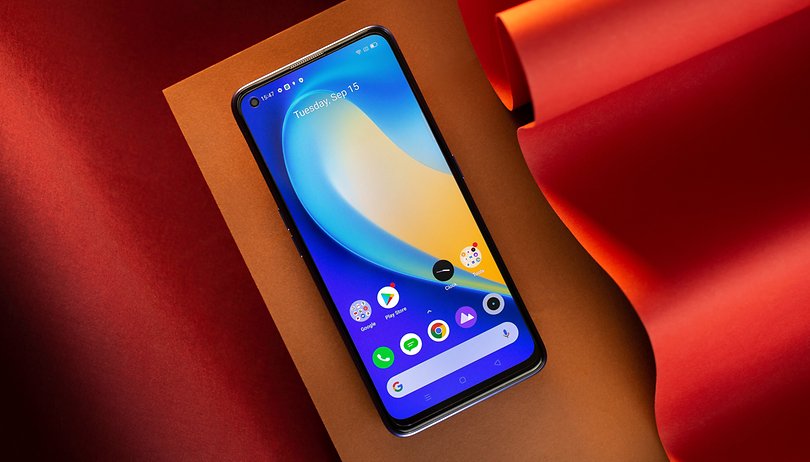

The Realme 7 arrived onto the market barely a year after the Realme 6 was released. It is pleasing to note that the manufacturer continued to stick to the 90 Hertz display as found in its predecessor and, apart from that, the smartphone does offer a closer degree of performance to the new Pro version. Which particular market segment is the Realme 7 targeting, and who ought to pick this handset up? Find out more in this review.
Good
- Superior performance to the Pro version
- Camera captures natural-looking photos
- Large battery with quick charging capability
Bad
- Materials look and feel cheap
- Big and heavy
- No IP certification
- Only with 48 MP camera here (64 MP in Asia)

For whom is the purchase worthwhile?
Realme is currently 100% committed to smartphones with a good quality/performance/price ratio, and this can seen through the Realme 7 specifications sheet. For a reasonable price, there are obviously some hardware packed underneath the hood that have made its way here - similar to other far more expensive smartphones. Those who are prudent with their money and yet want a quad-camera setup, a 90 Hz display, and a large battery capacity should definitely read on.
You can pick up the global version of the Realme 7 in Europe. In Asia, the smartphone was released onto the market a little bit earlier and comes with bumped up specifications for the camera, namely the 64 MP primary shooter. The 48 MP primary camera in the German model would suffice for those who have already set their hearts on picking this one up, never mind the slight loss in quality.
What I like about the Realme 7...
90 Hertz display
The Realme 6 did surprise many at the beginning of the year when it was released with a fluid 90 Hz display. For those who are new to the world of smartphones, here is a brief summary: The number of Hertz describes the frequency at which a display updates the input of the operating system. Thus, a 90 Hertz display tends to look smoother than a screen that runs at only 60 Hertz. This is exactly the advantage of the display in the Realme 7, because with 90 Hertz it is smoother compared to the supposedly higher-end Realme 7 Pro model in this aspect. Granted, the latter comes with an OLED panel which opens up the possibility for an Always On Display option, while the Realme 7 is stuck with a traditional LCD display.
It is a rather curious decision to omit a 90 Hz display on the Realme 7 Pro, that is all we can say. The two displays differ in details as follows:
Realme 7 and Realme 7 Pro: displays in comparison
| Feature | Realme 7 | Realme 7 Pro |
|---|---|---|
| Display size | 6.5 inch | 6.4 inch |
| Resolution | 1,080 x 2,400 pixels | 1,080 x 2,400 pixels |
| Screen protector | Corning Gorilla Glass 3 | Corning Gorilla Glass 3+ |
| Refresh rate | 90 Hertz | 60 Hertz |
| Technology | IPS LCD | OLED |
Where the Realme 7 picks up points in the refresh rate, the Pro version shines in terms of the display technology used. OLED displays usually offer a higher luminosity compared to IPS panels and provide a very high contrast ratio. In addition, OLEDs usually offer a little bit more colour rendering. However, the disadvantages resulting from this technical difference can only be seen on the Realme 7 to a limited extent.
The display of the Realme 7 works pretty well on its own even without OLED technology, as it delivers with nice colour rendering and good contrasts. Only the luminosity level is unable to keep up with OLED screens from this year (2020). Brightness levels are still sufficient for use under direct sunlight. As for the Realme 7 Pro's display, the screen edges are not the sleekest to look at, as they prove to be simply too thick for a smartphone that is released this year. The front-facing camera is presented via a punch-hole notch, and thankfully it is not that much bigger than the one found in the Google Pixel 4a 5G.
Good performance at Pro level
The Realme 7 Pro proved to be quite the performer in David's review and compared to this smartphone, the performance of the Realme 7 does get the heart pumping. Unfortunately, no Qualcomm processor sees action here, but rather, a Mediatek Helio G95 chipset is used. This SoC has been advertised as a gaming processor, which is fast enough to handle the pre-installed Android 10 operating system without any glitches or slowdown in everyday use. My favourite action with any Android-powered device is to turn off the animations in the developer settings, which makes the entire Android experience nice and responsive.
However, the fact that Realme uses a Mediatek chipset in the cheaper model remains, but this does not offer any real disadvantage that is blindingly obvious. As some of the benchmark tests show, the standard Realme can compete with the Pro version without missing a beat. To be fair, I have to mention at this point that Realme sent us the 128 GB version with 8 GB of RAM for our review. With a recommended retail price of €249, this is priced very closely to the Pro, which you can pick up for €299. Now, on to the benchmarks:
Benchmark comparison: Realme 7 and Realme 7 Pro
| Benchmark | Realme 7 | Realme 7 Pro |
|---|---|---|
| 3D-Mark Slingshot Extreme ES 3.1 | 2705 | 2523 |
| 3D-Mark Slingshot Volcano | 2745 | 2638 |
| 3D-Mark Slingshot ES 3.0 | 3263 | 3551 |
| Geekbench 5 (Single/Multi) | 507 / 1637 | 575 / 1784 |
3DMark actually showed that the Realme 7 model clocked higher numbers than the Realme 7 Pro. This good performance was also evident in mobile games, where you can adjust the graphic settings upwards without much concern. Call of Duty: Mobile also ran smoothly at maximum graphics settings while racing games like Asphalt 9 also shone, delivering crisp looking details if you decide to crank up the quality of the graphics settings to the maximum.
Camera Quality
A look at the back of the Realme 7 caused some disillusionment for me at first. "Not another quad-camera setup!", I thought. It must only be for marketing purposes where there is a depth sensor, a miserable wide-angle and a macro camera. When I went on a photo tour with the Realme 7 during my lunch break, I was mostly surprised by the quality of the pictures, especially the colour rendering and the decent HDR mode that looked pretty good.
Picture quality in various settings
Let's go through a few shots in detail to evaluate the image quality of the Realme 7. We begin with a typical good weather shot using the main camera.
Shot under optimal lighting conditions
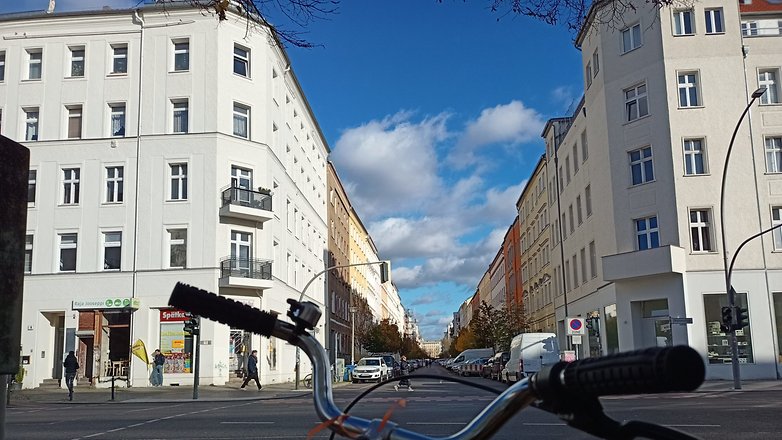
The 48-megapixel main camera of the Realme 7 offers an open aperture of f/1.8. Because so much light falls on the sensor, the smartphone keeps ISO sensitivity low in good weather and exposure times short. For pictures with 12 megapixels, the smartphone uses pixel binning and downsamples the full resolution, which means you end up with a very good degree of sharpness and great colour reproduction. However, I felt that the image proved to be a bit too overdrawn, where objects end up with rather unnatural edges.
Recordings during twilight and at night
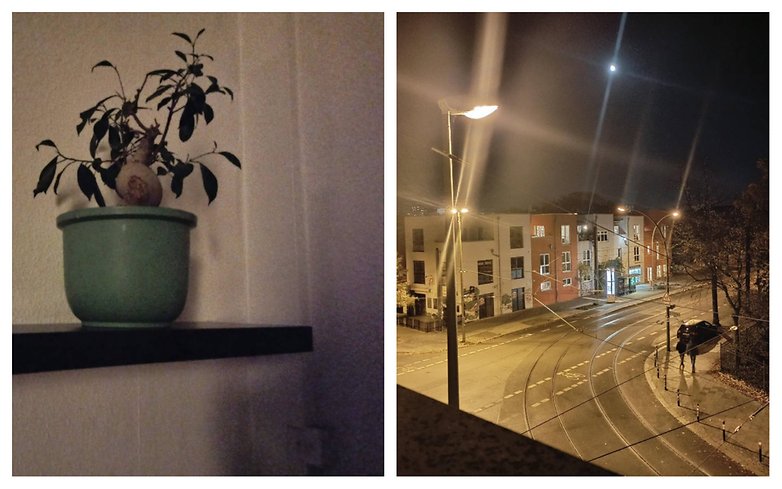
Let's go from optimal conditions to situations where most cameras reach their limits. Modern smartphones have a special mode for taking night shots, including the Realme 7, and despite the night mode, the results are rather poor with low detail and plenty of noise. Under low light conditions, there is also a strong sharpening of the images, which increases the visibility of the image noise a bit. The Realme 7 is not a night vision device, but at least it takes reasonable pictures in the dark.
Focal length range from ultra-wide-angle to telephoto
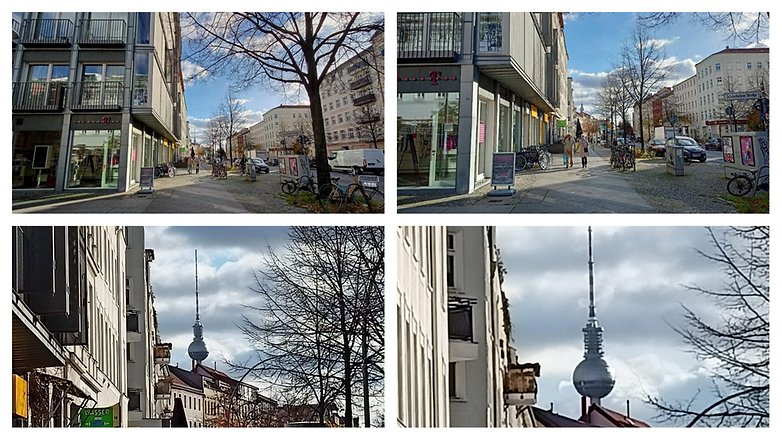
If you're lazy when taking pictures and need a smartphone with a long focal length range, the Realme 7 has an ultra-wide-angle sensor with a field of view of 119 degrees. Telephoto shots are only possible with a digital zoom and lose quality as magnification increases. You can see the whole set of results in my fancy collage, especially where the wide-angle camera shines when placed under scrutiny. Here, you can expect a beautifully dynamic range and surprisingly straight lines. But a resolution count of only 8-megapixels is barely sufficient in this day and age.
HDR images
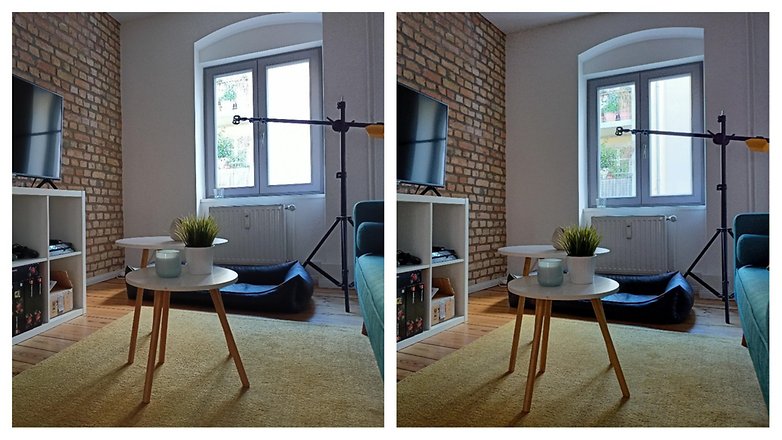
The Realme 7 boosts the dynamic range of the sensor artificially, just like any other current smartphone. In the photos above, you can see this best on the window that doesn't completely disappear in bright light with HDR enabled. Realme proves itself once again to be a good midway point, as opposed to offering too much or too little. Pictures do not end up looking artificial and are nicely dynamic.
Portrait mode for people and objects
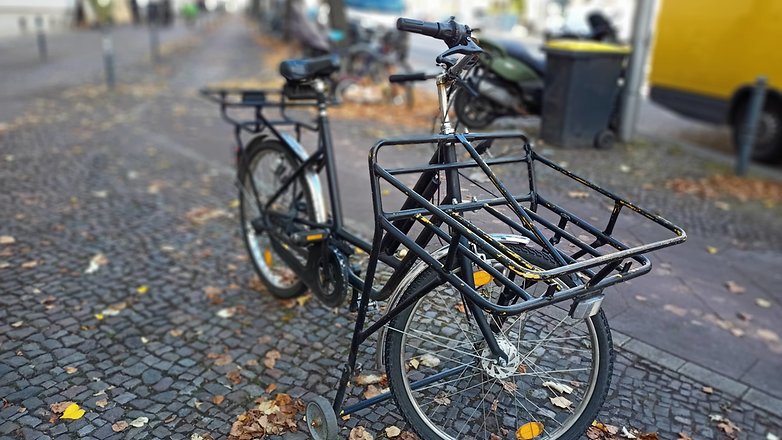 The Bokeh on objects works surprisingly well.
/ © NextPit
The Bokeh on objects works surprisingly well.
/ © NextPit
Before this review ends up as a camera review, here are a few words about the portrait mode. This mode also works with objects, and here the smartphone benefits from its own depth sensor. Offering clean lines, I like how the rear part of the bike slowly fades into a blur, and this positive impression was also confirmed when snapping selfies. Here, I feel that the front camera delivers comparable results as the quad-camera setup on the back. A final example is shown below.

Do you want to learn more about smartphone cameras? Check out our camera guide for smartphones:
Update to Android 11 in December
Realme's future offensive for the European market is also noticeable when it comes to software updates for their devices. According to the update schedule, there will be an update to Android 11 for the Realme 7 series in December. Thus, the manufacturer has raised the longevity of its devices to the next level, at least in terms of software.
Realme's own Android interface Realme UI already looks good in version 1.0. Thus the operating system on Realme 7 appears tidy and looks like a mixture of stock android and the Xiaomi launcher MIUI. As with the Realme C11, I liked how gestures can be drawn directly on the switched-off display to invoke an action.
Battery life with quick charging capability
If you like the Realme UI as much as you do after picking this device up, and can hardly keep your hands off the Realme 7, then you will surely look forward to the long battery life. This is because the smartphone is equipped with a massive 5,000 mAh battery. Cramming it into the device does make the smartphone a little fat, though. In fact, the overall height stands close to one centimeter.
As usual, when it comes to smartphone reviews, there are only a few precise details available concerning the device's battery life. However, such a large battery usually translates to being able to go up to two days without having to look for a power outlet if the context of usage involves you using it for occasional calls, regular WhatsApps interaction and viewing YouTube videos during your evening downtime. If the battery runs out of juice faster than you would expect, you can easily take advantage of the quick charge feature known as Dart Charge.
"Dart Charge works on 30 watts power delivery and should charge your smartphone by 50% within 26 minutes. A charging test that began at ten per cent battery level reached 60 per cent after exactly 26 minutes. Realme thus keeps its quick-charge promise to the letter. Especially when it comes to such large batteries, fast charging systems are definitely pleasant to have. The Honor 9A, for example, has a 5,000 mAh battery that simply takes far too long to charge over a micro-USB connection.
What I don't like about the Realme 7...
The look and feel
I've already teased the Realme 7 a bit about this matter: this smartphone is
not exactly a head-turner.
The smartphone is close to a centimetre thick and tips the scales at nearly 200 grams, making it overweight as well. It's hard to pinpoint on where the additional weight comes from. The cell phone's housing does not contain any glass or even aluminium.
Rather, the housing made out of plastic, in which the buttons are embedded in a rather rickety manner. The switch on the right side of the case also doubles up as a fingerprint sensor and performs an admirable job when called upon. This slightly favourable overall impression is underlined by a rattling vibration motor, which is preferably set to activate only when it deals with incoming calls. If you were to use it for haptic feedback while typing, the vibration does prove to be rather disturbing.
The speaker
The Realme 7 has a single downward-firing speaker at the bottom. As with many other Android smartphones, this speaker sends sound downwards out of the case and has three cut-outs milled into the case for this purpose. While missing stereo sound is almost manageable, the positioning of the speaker is not optimal when viewing videos or enjoying mobile games.
This is because the cut-out areas for the speaker often remains covered and hence, the volume level is reduced to a minimum. This is especially obvious when playing games, where the positioning of the hands is very important, and to miss out on a full audio experience might inconvenience you. If you free the loudspeaker from all constraints, the tone is generally loud but it when it comes to bass, it has a poor range. A second speaker in the area above the display would have done the smartphone a whole lot of good.
Final verdict
The Realme 7 surprised in the review with a very good performance. Although the manufacturer does not use Qualcomm components, the Realme 7 is on par with the Pro version when it came to benchmark comparisons. Moreover, some users might also like the display better thanks to the 90 Hertz refresh rate. However, you'll have to make do with an IPS LCD panel in return. Also disappointing is the extremely heavy plastic case, which happens to be too thick for a smartphone that is released this year. Realme has also skimped a bit too much when it comes to the quality of the vibration motor and the mono speaker setup.
Alternatives to the Realme 7
If you are still wondering whether you should pick up the 128 GB Realme 7 model with 8 GB of RAM, the Pro version might prove to be an enticing alternative with an additional €50 premium. The advantages and disadvantages have been laid out clearly throughout this entire review. In principle, all of our recommendations for smartphones under €300 come with other alternatives: Among them are the Samsung Galaxy A51, its predecessor the Realme 6, and the Xiaomi Redmi Note 9 Pro.








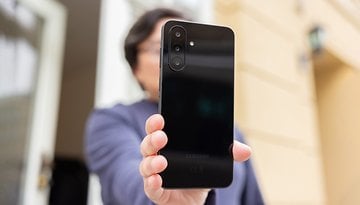
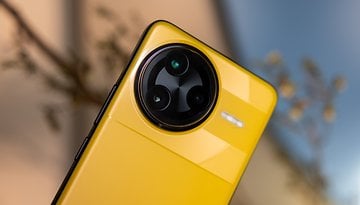
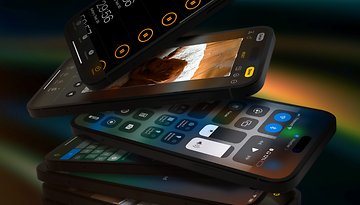
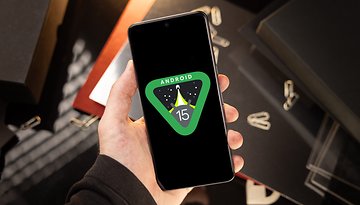

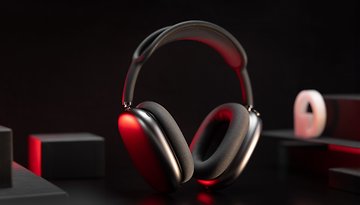
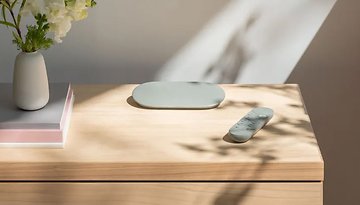


-
Admin
Nov 11, 2020 Link to commentNot too bad for the price
The case is made of plastic. Hell, I wish ALL smartphone cases were plastic. Covering them with glass is just a waste of resources. 99% of smartphone users stick them into a protective case anyway.
Totally agree with u. I don't understand why buy a good looking phone n then cover it using a case.
Instead of plastic an aluminum back would have also made it look good but I guess they want to give it nice color effect in plastic which cannot be done in other back panel material plus it is cheap.